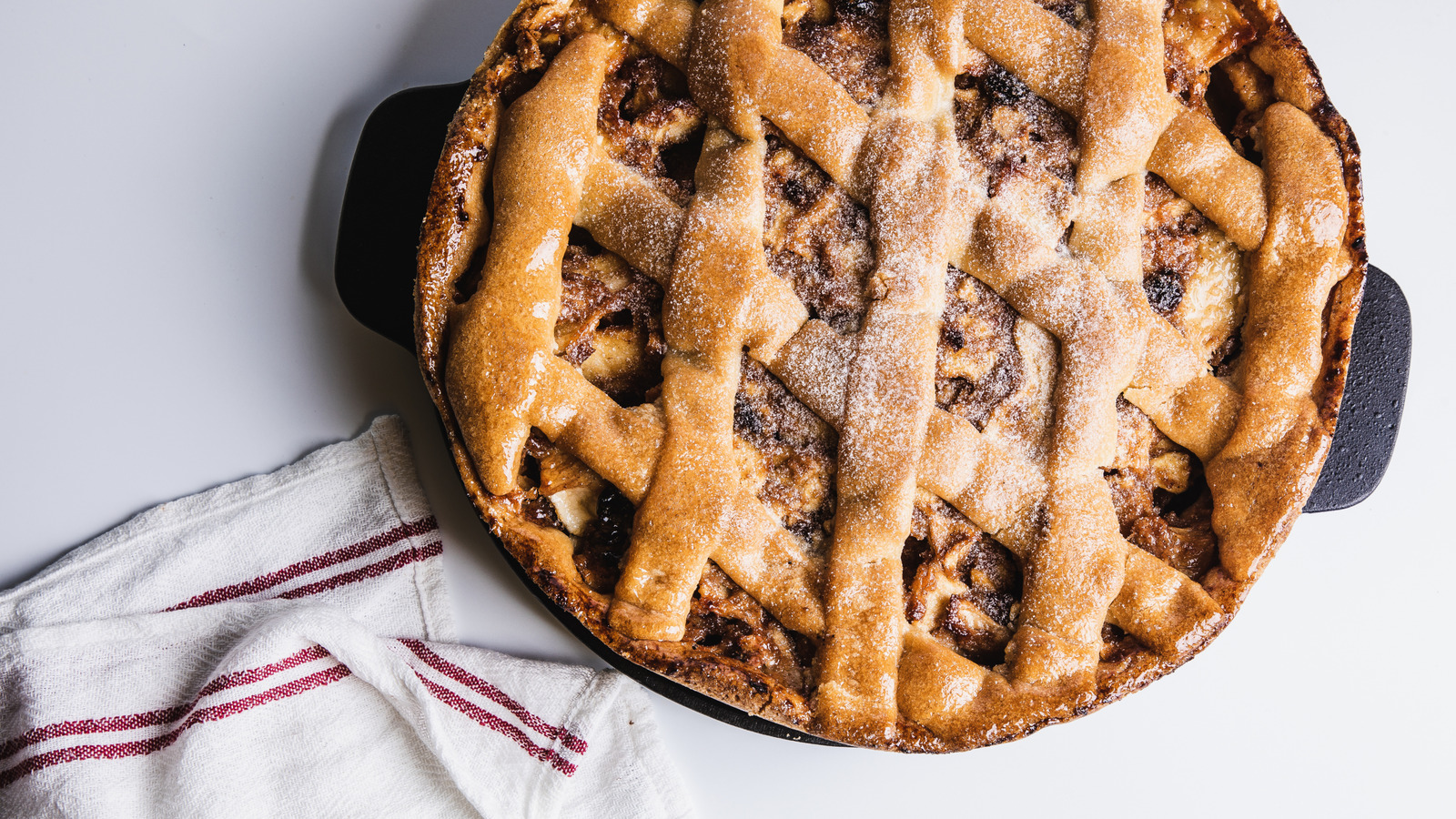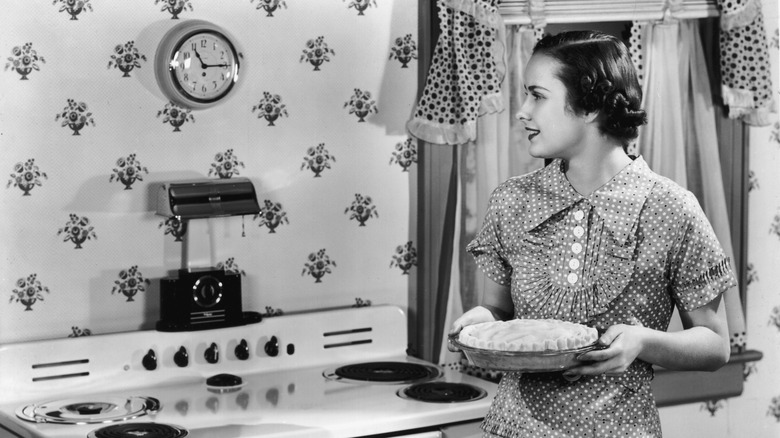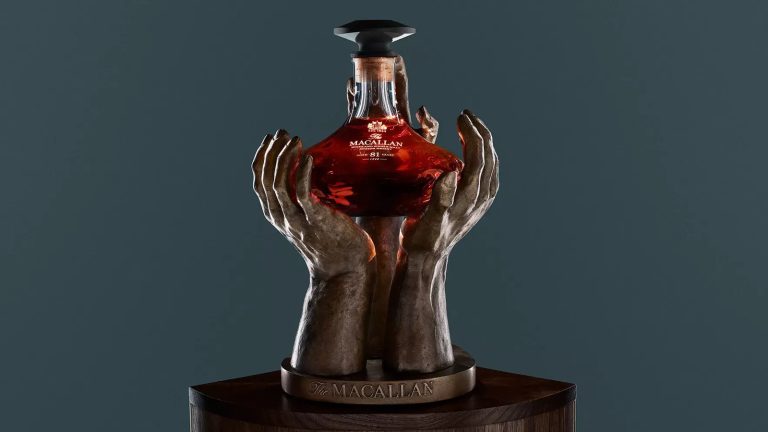You know the idiom: “It’s as American as apple pie.” The adage is often used to profess the true Americana of phenomena both good and bad. But perhaps the saying should be “it’s as American as mock apple pie.” After all, while apple pie originated in England, mock apple pie is more than likely an American phenomenon, and certainly helped to carry the nation through the doldrums of the Great Depression. Now, the concept of a mock apple pie might be a bit of a head scratcher for many. After all, how can you possibly make a fake apple pie? With a lot of crackers is how!
Mock apple pie is a simple dish, consisting of your usual double pie crust (though some recipes call for a streusel topping) and a filling of cinnamon, sugar, lemon juice, cream of tartar and crackers (usually butter crackers). To make, prepare your crust as usual, and boil your crackers in water, cream of tartar, lemon, and sugar for five minutes, then pour into your crust and bake until golden brown. The resulting dish is a surprisingly tasty and decently apple-ish pie that is sure to impress even the snootiest skeptic. While it certainly isn’t a direct copy of an authentic apple pie, the boiled crackers do take on a similar texture to sliced apples (though it can veer into pumpkin pie territory), and have a sweet, zingy taste that is rounded out by cinnamon. Still, it is worth wondering: How did mock apple pie come to be? And what alchemy is afoot which turns the humble cracker into a delicious apple stand in? Let’s dig in.
When apples are short, reach for crackers
Mock apple pie is often seen as an icon of the Great Depression, in the vein of meatloaf or magic-trick-like water pie. It’s a mix of seemingly incongruous ingredients that come together to form a hearty and delicious dish that is more than the sum of its parts. However, the dish actually precedes the Depression by nearly 100 years. The first recorded recipe for the pie dates back to 1857, when The Saturday Evening Post published a recipe for “cracker pie.” The dish was also featured in several Southern cookbooks in the 19th century. But it wasn’t until 1934, in the midst of the Depression, that the dish really took off, thanks to the invention of Ritz crackers.
Ritz crackers, thanks to their buttery taste and cheap price tag, were an instant hit when hey first hit the shelves in the 1930s. Soon after their release, Nabisco began printing a recipe for mock apple pie on the back of its cracker boxes. This inspired many home cooks to try their hand at making mock apple pie, a perfect and inexpensive substitute for actual apple filling. The mock apple pie recipe soon became a staple on Ritz boxes, and it was included on the cracker containers for several decades. The dish had a bit of a resurgence in the 1960s, fueled by fond recollections of the Depression-era staple. In recent years, the pie has found renewed interest, thanks to vintage food aficionados.
Why it works (at least in a pinch)
Mock apple pie is often considered a dated dish, as quintessentially vintage as, say, the glowing green Watergate salad. However, it still endures as a go-to dessert for many home bakers, who love the dish for its easy assembly, delicious apple verisimilitude, and nostalgic appeal. Its enduring nature really comes down to the simple yet ingenious mock apple pie recipe. Perhaps the most common circulating mock apple pie recipe belongs to Ritz crackers, and there are a few key tricks hidden within the recipe that turn it from a somewhat confusing collage of crackers and pie dough, to a nearly one-for-one mimic of apple pie.
For starters, boiling your crackers with sugar and lemon juice will soften them, causing them to take on a more apple-like texture. The sugar and lemon gives the filling the necessary sweetness and a bit of tang, and the cinnamon brings out perhaps the primary flavor of apple pie. But perhaps the key to the pie success is its most humble ingredient: cream of tartar. Cream of tartar is a white powdery substance of an acidic nature that is often used in baking. In this recipe, cream of tartar serves two purposes: adding an acidic note that helps bring a bit of fruit-like flavor to your cracker pie filling, and preventing sugar crystallization as you boil your crackers with your sugar. Cream of tartar helps prevent melted sugar from re-crystallizing after cooling. The result is a mock apple pie filling that will be perfectly smooth in texture and zingy in taste.







